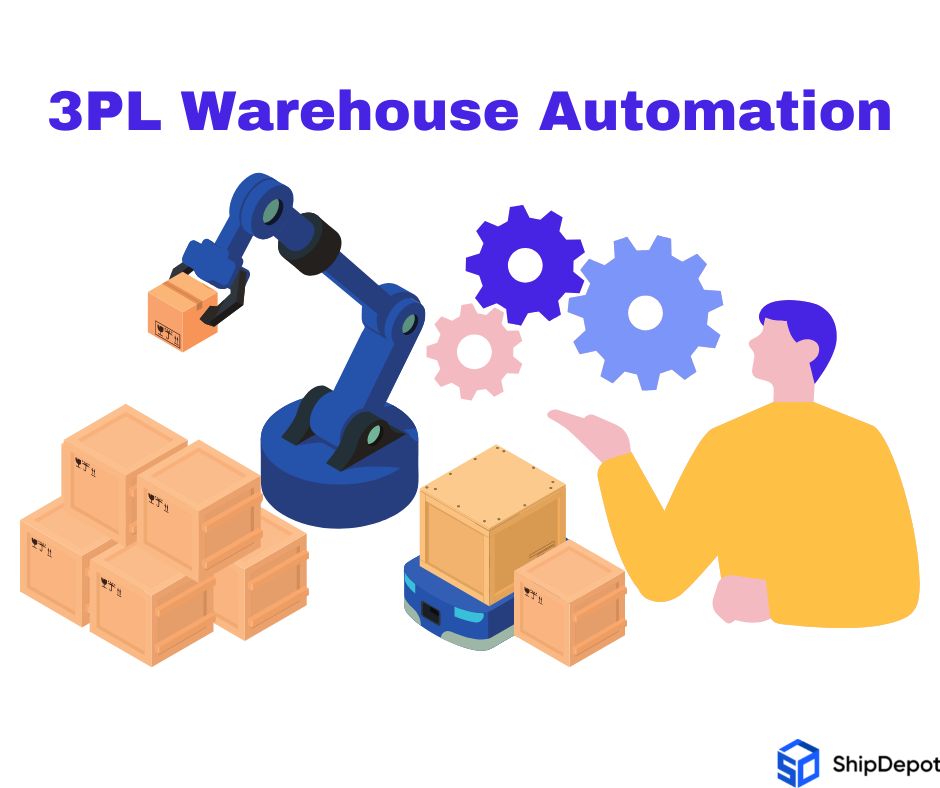Automation is a hot topic in 3pl providers nowadays. In fact, according to a recent survey by the logistics software company Descartes, nearly 70% of logistics professionals believe that automation will be a key driver of growth for the industry over the next five years. As the logistics industry continues to evolve, technology has become a driving force behind increased efficiency and productivity. Of course, implementing automation in 3pl warehouse operations is not without its challenges. Get to know in this blog the benefits, challenges, and trends associated with automating 3pl warehouse operations.
The Benefits of Automation in 3PL Warehouses
Automating warehouse operations offers several benefits, including:
- Increased Efficiency: Automation reduces the need for manual labor, which means faster and more accurate processing times. Automated systems can handle repetitive tasks, such as sorting and labeling, freeing up employees to focus on more complex tasks.
- Improved Accuracy: Automated systems are more accurate than human workers, which reduces errors and improves the overall quality of service. This is especially important when it comes to order fulfillment, where accuracy is critical.
- Cost Savings: Automation can reduce labor costs and increase productivity, resulting in cost savings for 3pl providers. Additionally, automated systems can help reduce waste, which can further cut costs.
- Scalability: As warehouses grow, automation can help them keep up with demand without the need for additional manual labor. Automated systems can handle higher volumes of orders, making it easier to scale operations.
Challenges of Automation in 3PL Warehouses
While there are many benefits to automating warehouse operations, there are also some challenges to consider. These include:
- High Upfront Costs: Implementing automation can be expensive, especially for smaller 3pl providers. The cost of equipment, installation, and maintenance can add up quickly.
- Training: Employees need to be trained on how to use and maintain automated systems. This can be time-consuming and requires a significant investment in resources.
- Integration: Automated systems need to be integrated with existing warehouse management software, which can be complex and challenging.
- Maintenance: Automated systems require regular maintenance to ensure they continue to operate efficiently. This can be time-consuming and costly.
Trends in Automation in 3PL Warehouses
The use of automation in 3pl warehouses is on the rise, and there are several trends to watch:
- Robotics: Robotics is one of the most significant trends in automation, with the use of robots for picking, sorting, and packing orders increasing. Robotics can improve efficiency and accuracy while reducing labor costs.
- Artificial Intelligence: AI is being used to optimize warehouse operations, from predicting demand to automating the routing of orders. AI can help warehouses operate more efficiently and make data-driven decisions.
- Internet of Things (IoT): IoT technology is being used to connect warehouse equipment and sensors, allowing for real-time monitoring and analysis of warehouse operations. This can help optimize processes and identify potential issues before they become problems.
- Autonomous Vehicles: Autonomous vehicles, such as drones and self-driving trucks, are being used to transport goods within warehouses and between facilities. This can improve efficiency and reduce the need for manual labor.
Conclusion
The rise of automation in 3pl warehouses is changing the game and revolutionizing the logistics industry. While automation offers numerous benefits such as increased efficiency, improved accuracy, cost savings, and scalability, it also comes with challenges such as high upfront costs, training requirements, integration issues, and maintenance needs. As technology continues to evolve, trends such as robotics, AI, IoT, and autonomous vehicles will shape the future of 3pl warehousing. 3pl providers need to stay up-to-date with these trends and carefully consider the benefits and challenges of implementing automation in their warehouses to stay competitive in the rapidly evolving logistics landscape.

One response to “Automation in 3PL Warehouses: Benefits, Challenges, and Trends”
Very nice post. I just stumbled upon your blog and wanted to say that I’ve really enjoyed browsing your blog posts. In any case I’ll be subscribing to your feed and I hope you write again soon!